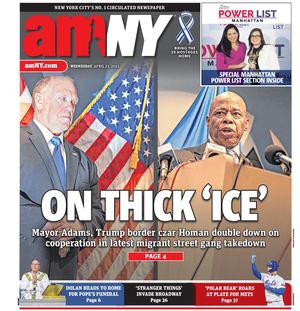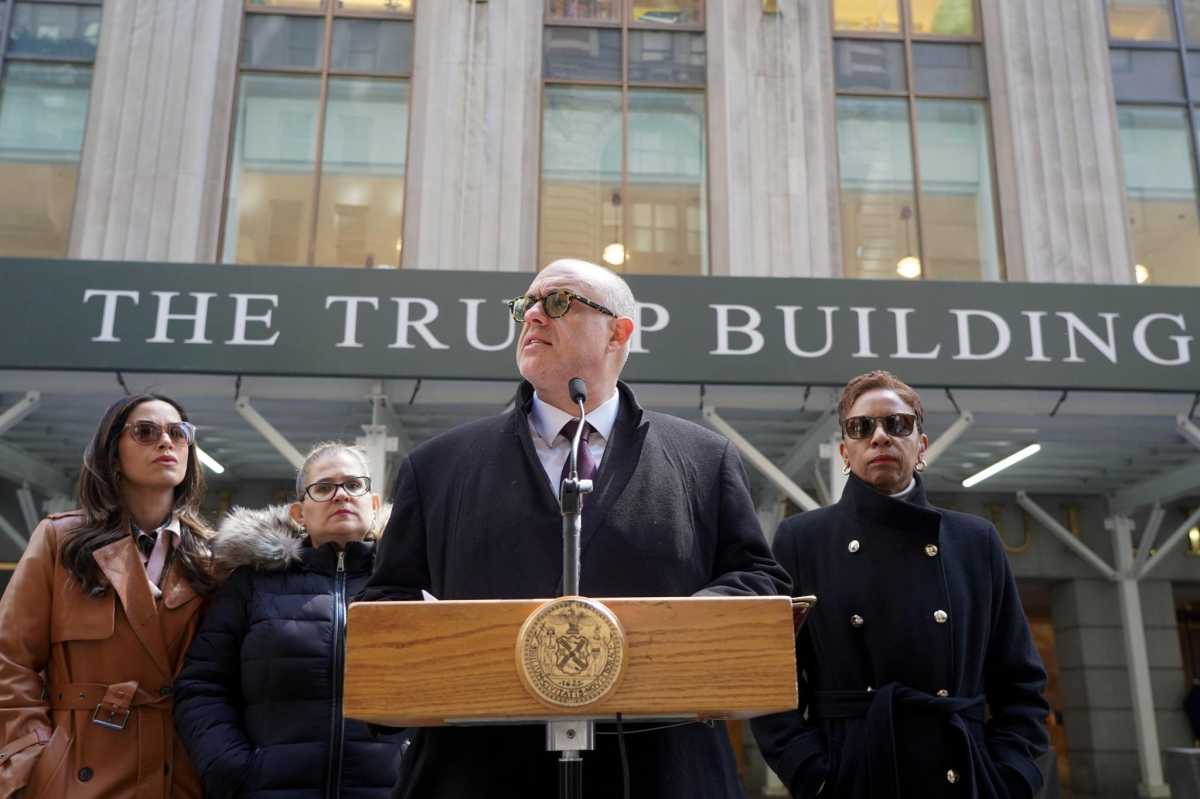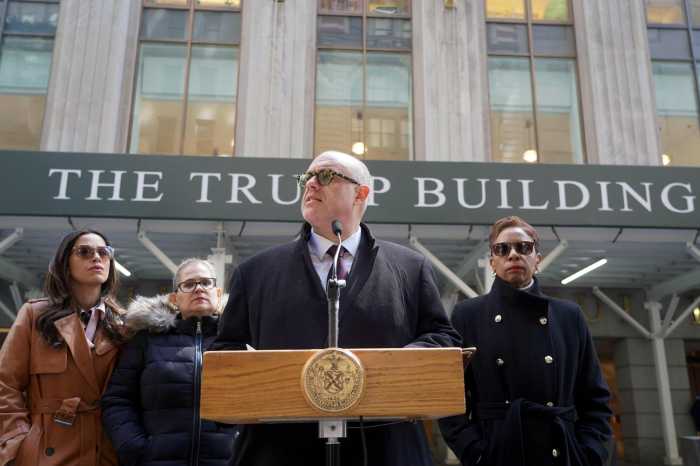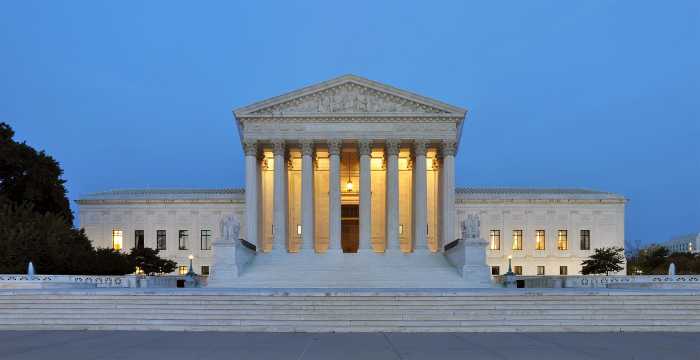You might have to convince a court officer to open the door for you. But the next time you’re near the Bronx County Building on Grand Concourse, set aside a second to look at the four strange but fascinating murals which have graced the building’s central hall since 1934.
The murals depict four moments from early Bronx history and have survived water damage and stuff being taped onto them, among other indignities, according to a historical pamphlet about the murals published by Bronx Borough President Ruben Diaz Jr. and the Bronx County Historical Society last week.
Those important moments include the 1639 arrival of Jonas Bronck, a Swedish merchant sea-captain who gave his name to the area. Also, the first meeting of the Westchester County Court in 1684, and two borough Revolutionary War events: the Battle of Pell’s Point in which a small force of Continentals helped George Washington and his troops escape, and Washington leaving the Van Cortlandt House after the end of the war to travel to Manhattan and take command of NYC.
You can take an advance look at new photographs of the full murals here.
Don’t be surprised if at first you find the murals a little lackluster. The giant 36-by-10-foot tableaus painted by James Monroe Hewlett are not exactly the most dynamic works of art. The bright, calm historical scenes unveiled in 1934 almost appear cartoonish, which might in part be due to Hewlett’s background working on set designs for Broadway plays like “Peter Pan.” Hewlett was used to painting things that people would look at from far away, either on a stage or up on a ceiling (he also worked on the mural of the sky at Grand Central Terminal).
This technique included a lack of shading, according to the pamphlet’s author, Bronx historian Lloyd Ultan.
That adds to a cartoonish look up close. Also, the scenes evoke a truly mystical world in today’s majority-minority Bronx. The murals are full of sober white figures proudly standing tall and accomplishing things, while a couple of Native Americans melt into the woods to the side. The art is less attuned to NYC’s current political mood than the famous New Deal-era “Resources of America” murals celebrating ordinary laborers in the Bronx General Post Office, for example.
But the Hewlett murals’ creation, demise and resurrection might tell an even more interesting story than their content. The artwork was a key part of the new Bronx County Building, whose construction was needed for the fast-growing borough, writes Ultan. In the 1920s, Manhattan’s population was spilling over into the Bronx and the new residents needed a center for government. The building ended up being so impressive and monumental that Bronx politicians argued its address, 851 Mott Avenue, wasn’t elevated enough. So they successfully renamed that stretch of Mott Avenue as Grand Concourse, the famed boulevard that picked up just to the north.
Mayor Fiorello La Guardia said the structure “reminded me of the palaces of my ancestors — Justinian, Augustus Caesar and Nero. In fact, compared to this they were just pikers. The building is gorgeous.” That was the setting and mood for the murals: an ascendant Bronx.
Unfortunately, the future was not so uncomplicated for the mural room, Ultan explains. In later years the murals were obscured by other art exhibits. They were dirtied when the area was turned into a government office in the years when space was too tight and a less ascendant local government had to make do with less. A cleanup attempt under then-Bronx Borough President Fernando Ferrer essentially closed the mural room to the public. Worst, in 2010, careless repair work allowed water to seep behind the murals. Bubbles appeared on the murals as well as dirty streaks in what should be sky.
Last year, the murals were restored and placed under better lighting, where they remain today — vibrant and proud and more reminiscent of the forward-looking moment for the borough when they were first installed.
That hopefulness and pride in borough and local history is what sets these murals apart for Ultan: “It’s saying, hey, great things and important things have happened in the Bronx. It’s not all Manhattan.”
































